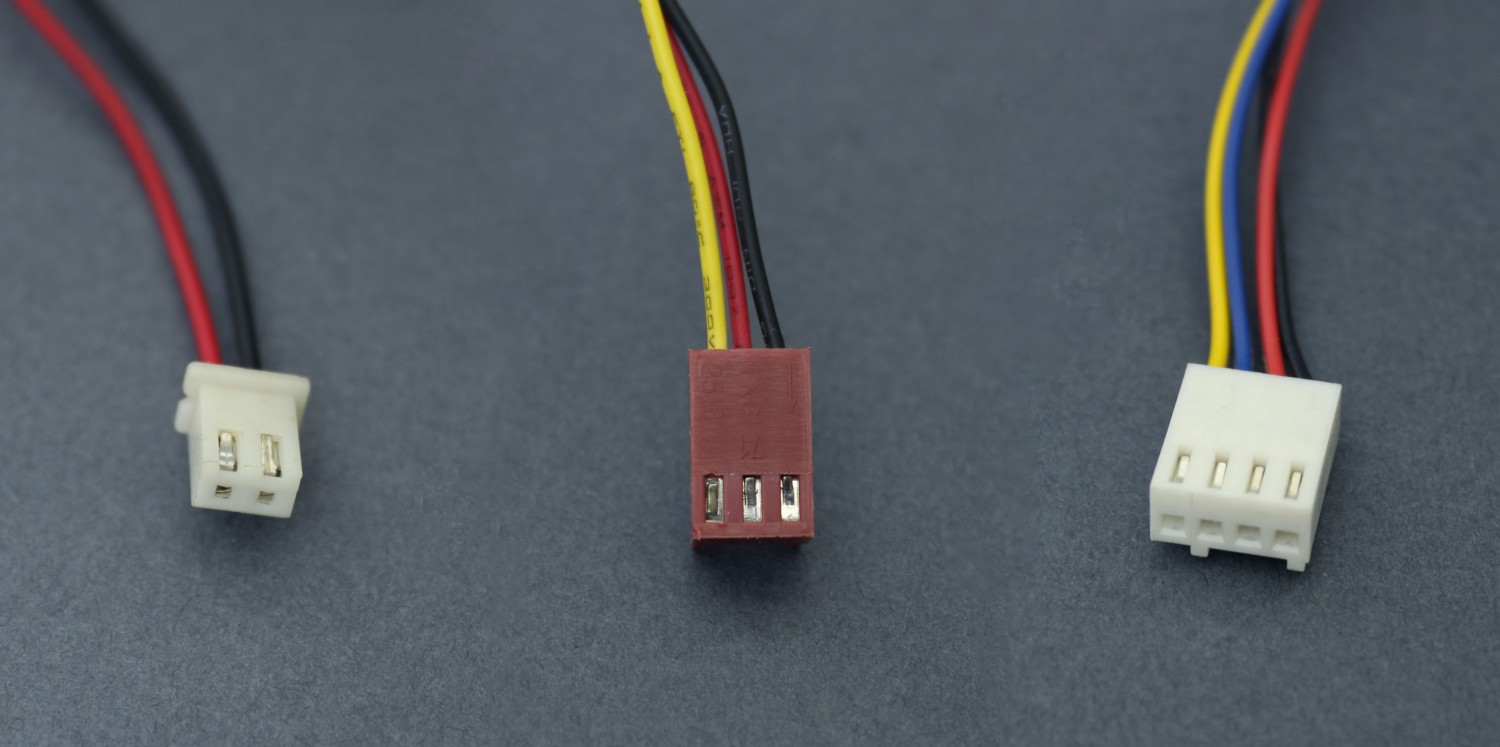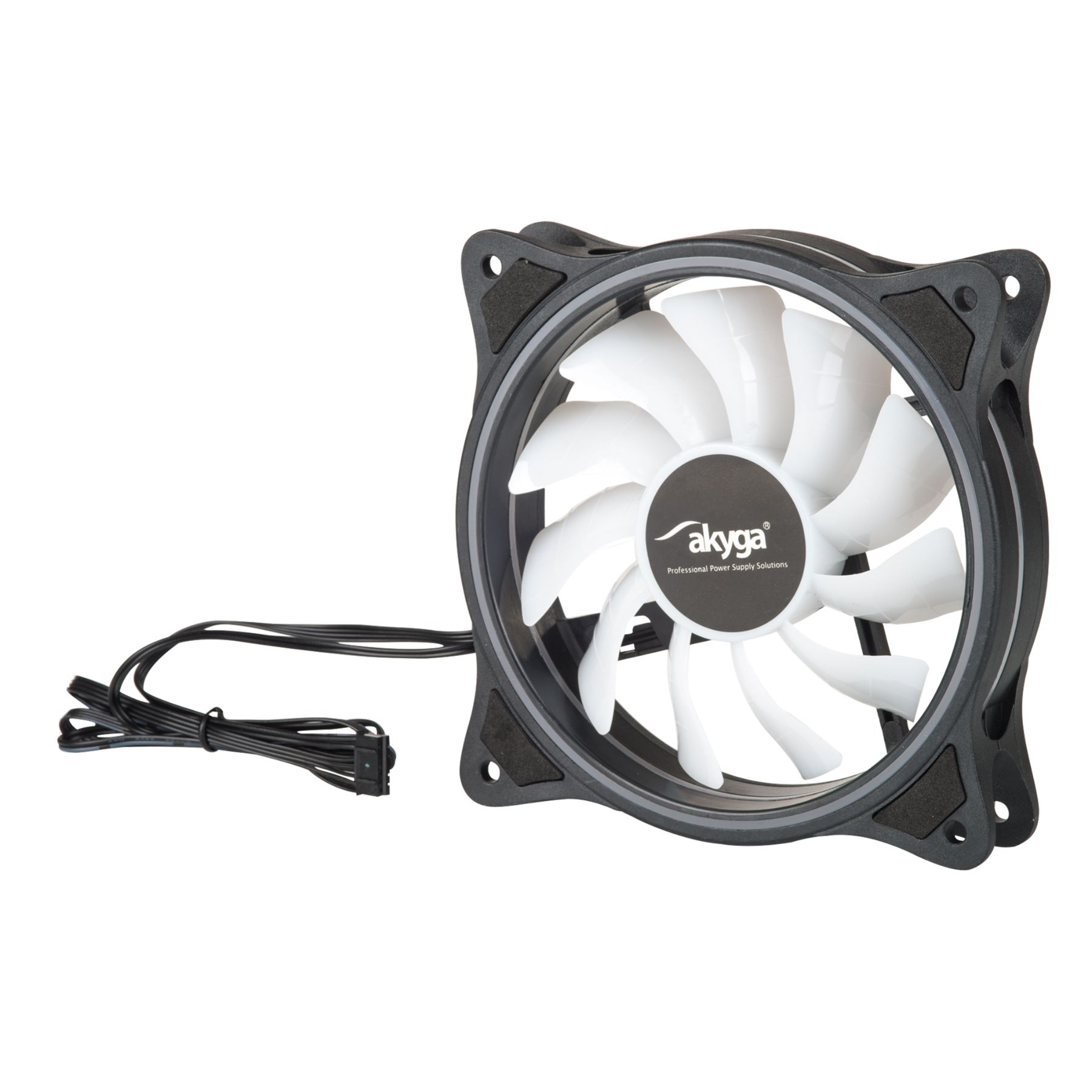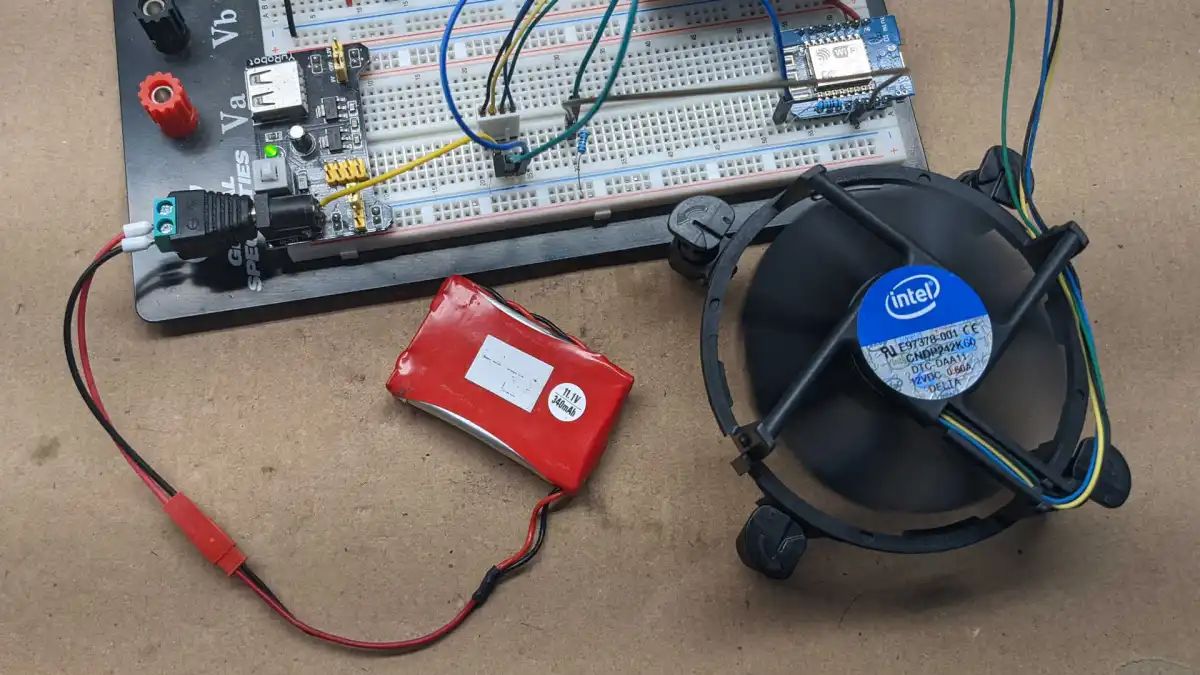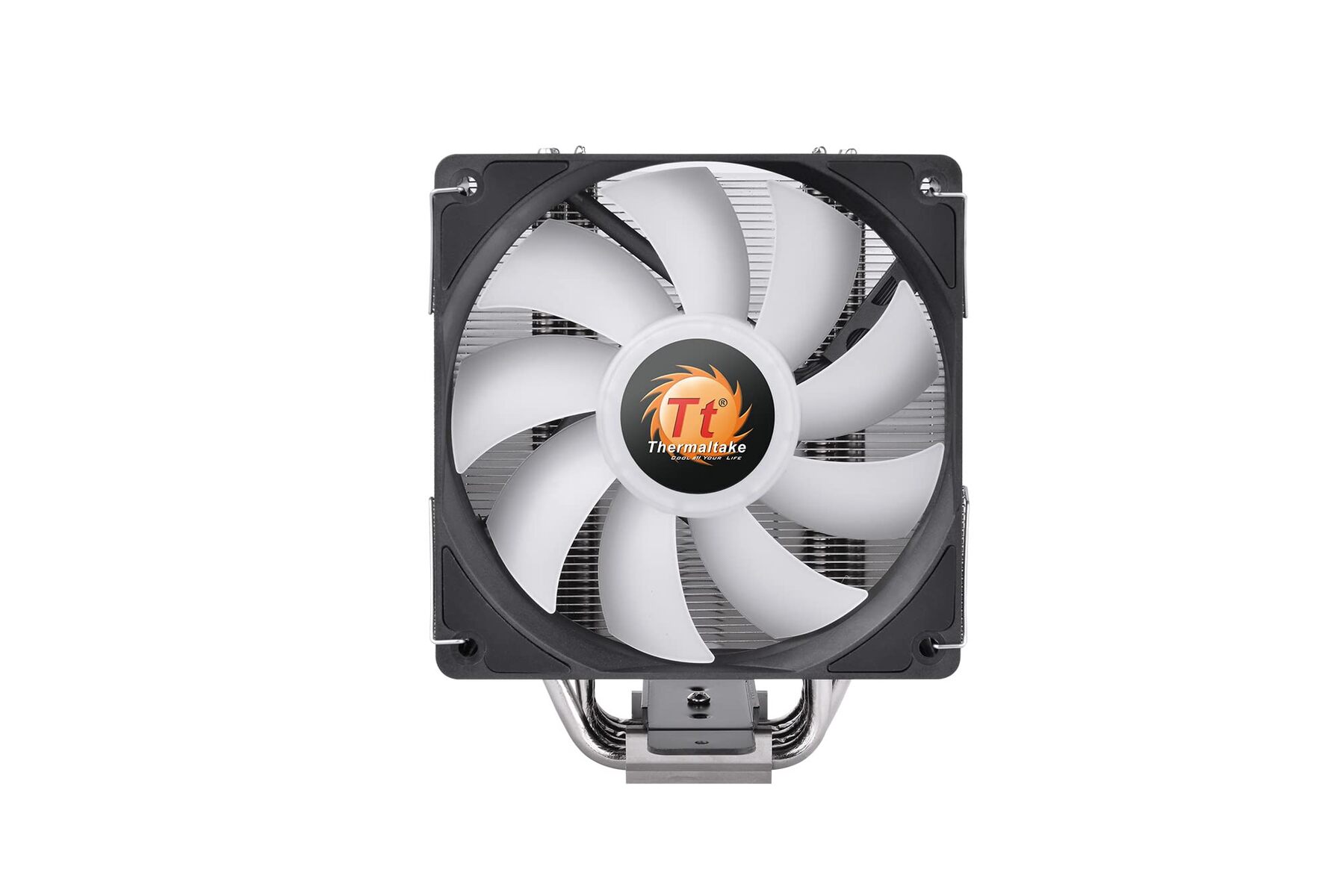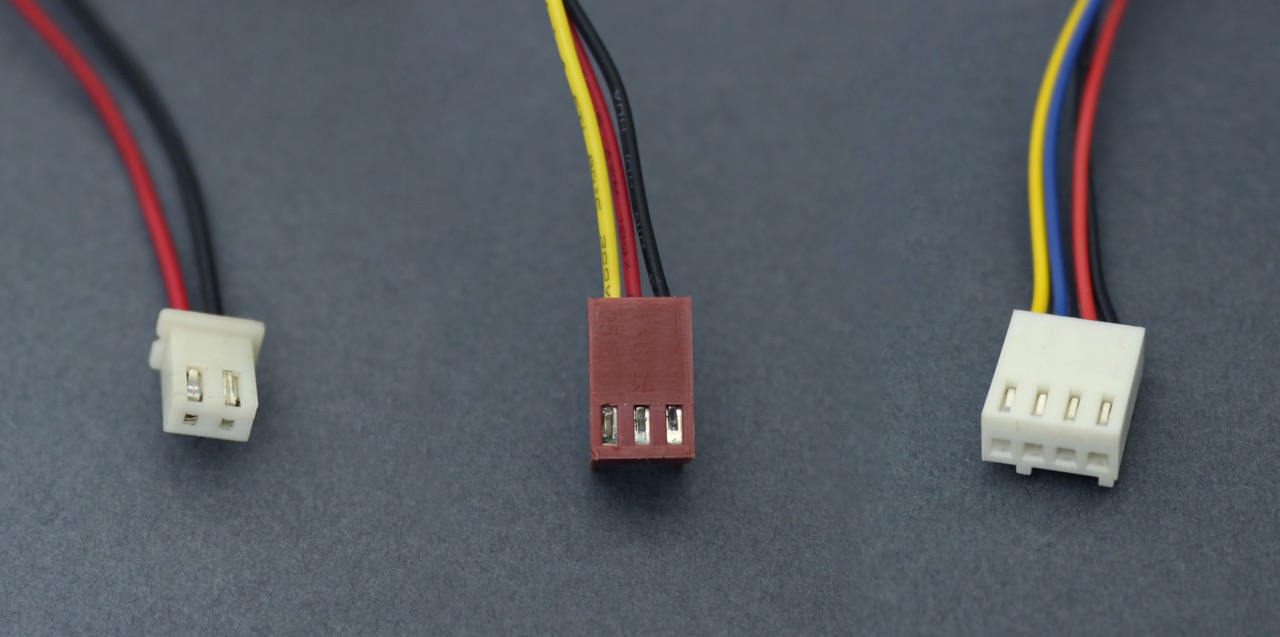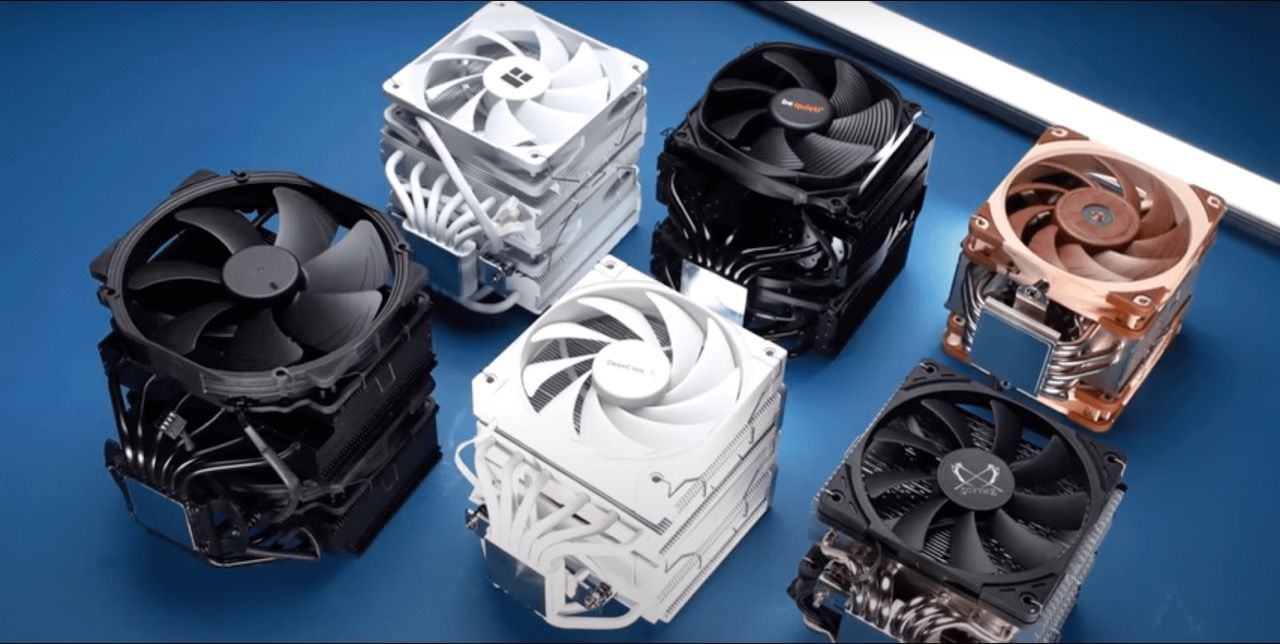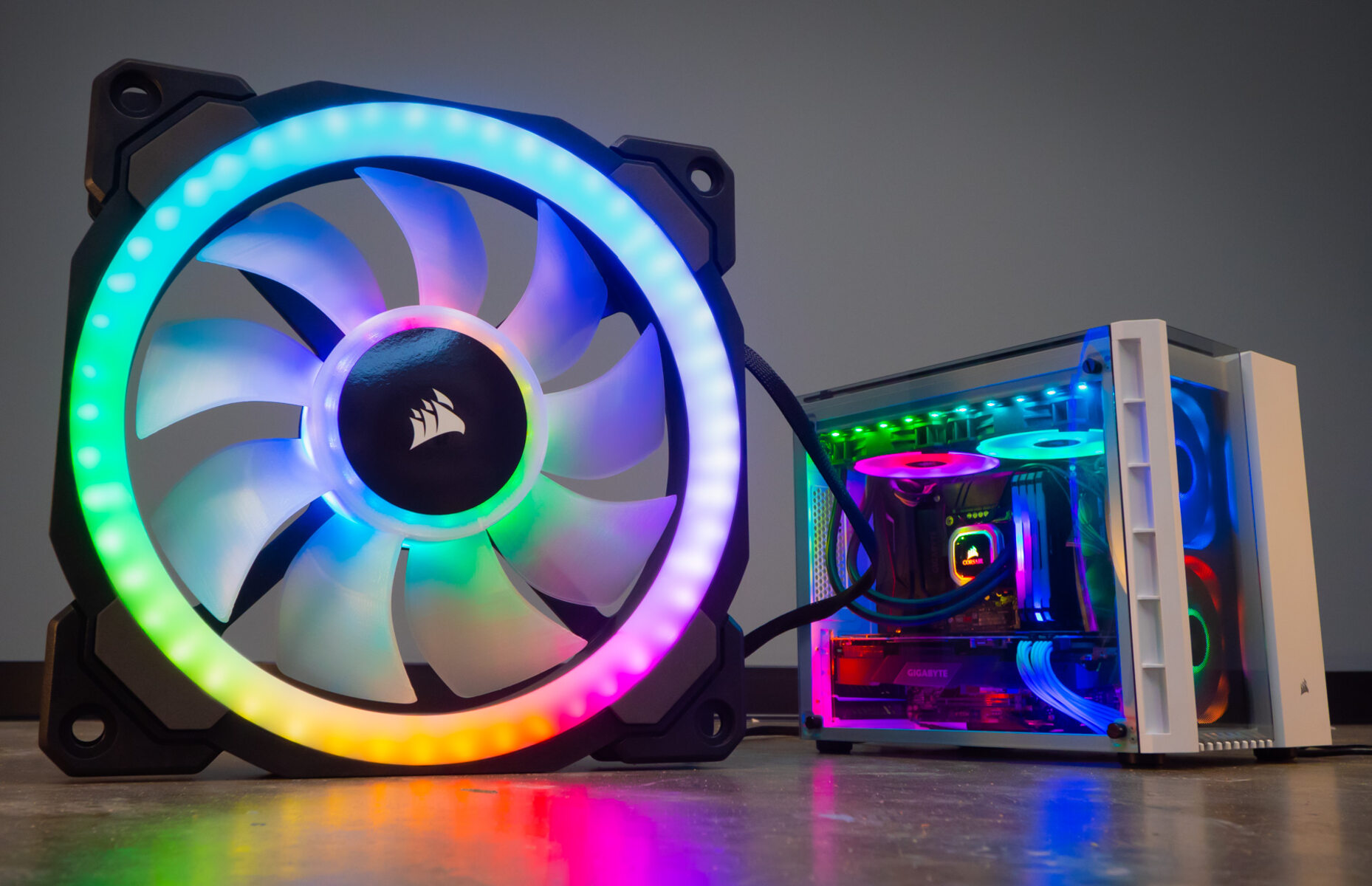Introduction
When it comes to computer hardware, cooling is a vital component in ensuring optimal performance and longevity. Overheating can cause various issues, including system instability and reduced lifespan of components. This is where case fans play a crucial role in dissipating heat from the internal components of a computer case.
One important feature to consider when choosing a case fan is PWM, which stands for Pulse Width Modulation. PWM is a method of controlling the speed of a case fan, allowing for better cooling efficiency and noise reduction.
In this article, we will explore what PWM is, how it works, the advantages it offers for case fans, the types of case fans that support PWM, how to control PWM on a case fan, and common troubleshooting tips.
So, if you’ve ever wondered how to make your case fans work more efficiently and quietly, or if you’re curious about the benefits of PWM for cooling your computer, keep reading to learn more about this fascinating technology.
What Is PWM?
PWM, or Pulse Width Modulation, is a technique used to control the speed of electronic devices, including case fans. It works by varying the width of the electrical pulses sent to the fan motor, effectively adjusting the amount of power delivered to regulate the fan’s rotational speed.
The principle behind PWM lies in the concept of duty cycle, which refers to the amount of time the signal is high (on) versus the total time of the cycle. The duty cycle determines the average power supplied to the fan motor, and therefore, the fan speed. A higher duty cycle means more power and a faster rotation, while a lower duty cycle results in less power and a slower rotation.
PWM signals are typically generated by the motherboard or a dedicated fan controller using specialized circuitry. These signals are sent to the fan through a 4-pin connector, which is specifically designed to support PWM functionality. It’s worth noting that older fans with 3-pin connectors are not PWM-compatible and can only operate at a fixed speed.
With PWM, the fan speed can be precisely adjusted to meet the cooling requirements at any given time. For instance, when the system is idle or experiencing low processing demands, the fan can run at a lower speed to reduce noise levels. On the other hand, during intense gaming or heavy processing tasks that generate a significant amount of heat, the fan can spin faster to provide maximum cooling efficiency.
This method of speed control not only helps maintain optimal temperatures but also minimizes power consumption and prolongs the lifespan of the fan by reducing wear and tear associated with constant operation at high speeds.
How Does PWM Work?
PWM works by rapidly switching the power supply on and off to the fan motor, creating a pulsating electrical signal. The ratio of on-time to off-time, also known as the duty cycle, determines the average power delivered to the fan and, consequently, the fan speed.
Let’s say we have a PWM signal with a 50% duty cycle. This means that the signal is on for 50% of the time and off for the remaining 50%. As a result, the average power supplied to the fan motor is reduced by half compared to a continuous, non-PWM signal.
The PWM control circuitry on the motherboard or fan controller generates these high-frequency pulses, typically in the range of 20 kHz to 30 kHz. Higher frequencies result in smoother operation, reducing audible noise caused by switching on and off. However, the actual switching frequency can vary depending on the specific hardware implementation.
In addition to the duty cycle, the PWM signal can also have varying voltages. Most commonly, the signal uses 5V and 12V levels, with 5V representing the off-state and 12V representing the on-state. These voltage levels correspond to different rotational speeds of the fan.
For example, if the duty cycle is set to 50% and the voltage is at 12V, the fan will spin at its maximum speed. Conversely, if the duty cycle remains the same but the voltage drops to 5V, the fan will operate at a slower speed. By altering both the duty cycle and voltage levels, precise control over the fan’s speed can be achieved.
It’s important to note that not all case fans are created equal when it comes to PWM support. While almost all modern fans offer PWM functionality, it’s always recommended to check the specifications before purchasing to ensure compatibility with your motherboard or fan controller.
Now that we understand how PWM works, let’s dive into the advantages it brings to case fans and why it’s worth considering when building or upgrading your computer system.
Advantages of PWM for Case Fans
Pulse Width Modulation (PWM) offers several advantages when it comes to controlling the speed of case fans:
1. Enhanced Cooling Efficiency: One of the main advantages of PWM is that it provides precise control over the rotational speed of case fans. This allows for optimal cooling efficiency by adjusting the fan speed to match the heat generated by the system. During intensive tasks, the fan can spin at a higher speed to provide maximum airflow and dissipate heat effectively.
2. Noise Reduction: PWM allows for dynamic fan speed regulation based on the system’s cooling needs. It means that when the system is idle or experiencing low processing demands, the fan can run at a lower speed, resulting in quieter operation. This is particularly beneficial for those who value a quieter computing environment during everyday tasks.
3. Power Efficiency: Since the fan speed is adjusted according to the cooling requirements, PWM helps save power by reducing the fan’s speed when it is not needed. This results in lower energy consumption compared to fans operating at a constant high speed. Not only does this help reduce electricity costs, but it also contributes to a greener and more sustainable computing setup.
4. Extended Fan Lifespan: Operating a case fan at high speeds constantly can lead to increased wear and tear on the motor, potentially shortening its lifespan. With PWM, the fan can run at lower speeds during periods of lower heat generation, reducing the strain on the motor and prolonging its longevity.
5. Precise Control: The flexibility of PWM control allows for fine-tuning the fan speed, either through the BIOS settings or dedicated fan control software. This level of control enables users to customize and optimize the cooling performance of their system according to their specific needs and preferences.
In summary, PWM offers a range of benefits for case fans, including enhanced cooling efficiency, noise reduction, power efficiency, extended fan lifespan, and precise control. These advantages make PWM an attractive feature for users who prioritize optimal cooling performance, quieter operation, and energy savings in their computer systems.
Types of Case Fans That Support PWM
Most modern case fans are designed to support PWM functionality, allowing for more precise control over their speed. Here are the common types of case fans that support PWM:
1. 4-Pin PWM Fans: These are the standard case fans that feature a 4-pin connector. They are specifically designed to support PWM control. The 4-pin connector provides the necessary connections for power supply, ground, tachometer (for monitoring fan speed), and PWM control signal. When connected to a compatible motherboard or fan controller, these fans can be controlled using PWM to adjust their speed dynamically.
2. All-in-One (AIO) Liquid Cooler Fans: AIO liquid coolers generally come with multiple PWM fans for optimized cooling performance. These fans are typically designed to work in tandem with the liquid cooling unit and can be controlled individually or in sync via PWM signals. They offer a balance between cooling efficiency and low noise levels, making them popular choices for users seeking both performance and convenience.
3. High-Performance PWM Fans: These fans are engineered for high-performance cooling applications, such as overclocking or intense gaming. They often have advanced fan blade designs, high static pressure capabilities, and low noise levels at higher speeds. These fans are intended to deliver exceptional cooling power while still being controllable via PWM signals for precise speed adjustments.
4. RGB PWM Fans: RGB fans have the added feature of customizable lighting effects. These fans typically come with integrated LEDs that can be controlled using PWM signals. The PWM control not only allows for adjusting the fan speed, but it also enables control over the lighting effects, such as brightness or color changing patterns. This gives users the ability to synchronize the fan speed and lighting effects for a visually appealing and personalized system.
5. Case Fan Kits: Some manufacturers offer case fan kits that include multiple PWM fans along with a PWM fan hub or controller. These kits provide an all-in-one solution for users who want to enhance their system’s cooling performance. The included fan hub or controller allows for centralized PWM control over multiple fans, simplifying the management of fan speeds and reducing cable clutter.
When selecting case fans, it’s important to check the product specifications to ensure they support PWM control. This ensures compatibility with your motherboard or fan controller, allowing you to take full advantage of the PWM functionality for optimal cooling performance.
How to Control PWM on a Case Fan
Controlling PWM on a case fan involves adjusting the fan’s speed by utilizing the PWM functionality provided by the motherboard or a dedicated fan controller. Here are the steps to control PWM on a case fan:
1. Check compatibility: Ensure that your case fan supports PWM. Most modern case fans come with a 4-pin connector, indicating PWM support. Verify that your motherboard or fan controller also has the necessary 4-pin PWM headers to connect the fan.
2. Connect the fan: Connect your PWM-enabled case fan to the motherboard or fan controller using the 4-pin connector. Ensure that it is securely plugged in to establish the electrical connection.
3. Access BIOS settings: Restart your computer and enter the BIOS settings by pressing the designated key during the boot process. The specific key may vary depending on your motherboard manufacturer (common keys include Del, F2, or F10).
4. Locate fan control settings: Navigate to the section of the BIOS that manages fan control. The location and terminology may differ between motherboard models, but it is typically found under a category such as “Hardware Monitor,” “PC Health,” or “Fan Settings.”
5. Enable PWM control: Within the fan control settings, look for the option to enable PWM control for the specific fan header that the case fan is connected to. Enabling this option allows the motherboard to regulate the fan’s speed based on temperature and system requirements.
6. Adjust fan speed: Once PWM control is enabled, you should see options to adjust the fan speed. This is usually done by setting a desired target temperature or using a slider to adjust the fan speed percentage. Experiment with different settings to find the balance between cooling performance and noise levels that suits your needs.
7. Save and exit BIOS: After making the desired changes, save the settings and exit the BIOS. Your computer will restart, and the PWM control settings will take effect, regulating the fan speed accordingly.
8. Use fan control software: Alternatively, you can control PWM on a case fan using dedicated fan control software provided by your motherboard manufacturer or third-party applications. These software solutions often offer more advanced features, such as custom fan curves and the ability to control multiple fans simultaneously.
Remember to monitor your system’s temperatures and fan speeds periodically, especially after adjusting PWM settings, to ensure optimal cooling and prevent any overheating issues.
By following these steps and leveraging the PWM control capabilities provided by your motherboard or fan controller, you can effectively control the speed of your case fans and optimize the cooling performance of your computer system.
Troubleshooting PWM Issues
While PWM offers precise control over case fan speed, occasional issues may arise that hinder its functionality. Here are some common troubleshooting tips to address PWM issues:
1. Check fan compatibility: Ensure that your case fan is PWM-compatible and connected to a 4-pin PWM header. If you are using an older fan with a 3-pin connector, it may not support PWM control and will require a different approach, such as voltage control or manual fan speed adjustment.
2. Verify correct connection: Double-check that the PWM fan is correctly connected to the PWM header on your motherboard or fan controller. A loose or incorrect connection can cause issues with PWM control. Additionally, make sure there are no internal or external obstructions interfering with the fan’s operation.
3. Update motherboard firmware: Check for any available firmware updates for your motherboard. Manufacturers often release updates that address compatibility issues or improve PWM control features. Visit the manufacturer’s website or use the provided software utilities to update the motherboard firmware.
4. Adjust fan control settings: Access the BIOS settings or fan control software and review the specific settings related to PWM control. Make sure that PWM control is enabled for the respective fan headers and that the temperature thresholds and fan speed percentages are correctly configured. Experiment with different settings to determine if any adjustments alleviate the PWM issues.
5. Test with a different PWM fan: If possible, try connecting a different PWM fan to the same header to see if the issues persist. This will help determine whether the problem lies with the fan itself or the motherboard/fan controller. If the alternate fan works properly, it may be necessary to replace the original fan.
6. Check for software conflicts: In some cases, conflicts between fan control software or monitoring utilities can interfere with proper PWM control. Temporarily disable or uninstall any third-party software related to fan control or monitoring, and then test if the PWM function behaves correctly.
7. Seek manufacturer support: If troubleshooting steps do not resolve the PWM issues, it may be necessary to contact the fan or motherboard manufacturer for support. They can provide specific guidance related to your hardware configuration and may offer further assistance or firmware updates to address the problem.
Remember to proceed with caution when making changes in the BIOS or using fan control software, as incorrect settings could potentially lead to adverse effects on system cooling or stability. It is always recommended to refer to the documentation provided by your motherboard or fan manufacturer for guidance and consult forums or communities for additional troubleshooting advice.
By following these troubleshooting tips and seeking appropriate support, you can help resolve PWM issues and ensure smooth control over your case fans’ speed to maintain optimal cooling performance.
Conclusion
Pulse Width Modulation (PWM) is a powerful technology that allows for precise control over the speed of case fans. By varying the width of electrical pulses, PWM ensures efficient cooling, reduces noise levels, enhances power efficiency, and extends the lifespan of fans. With PWM, users can customize and optimize the cooling performance of their computer systems based on workload and temperature demands.
In this article, we learned what PWM is and how it works by adjusting the duty cycle and voltage levels to regulate the fan speed. We explored the advantages of PWM for case fans, including enhanced cooling efficiency, noise reduction, power efficiency, and extended fan lifespan. Moreover, we discussed the different types of case fans that support PWM, such as 4-pin PWM fans, AIO liquid cooler fans, high-performance PWM fans, RGB PWM fans, and case fan kits.
We also went through the steps of controlling PWM on case fans, including verifying compatibility, connecting the fans to the PWM headers, accessing BIOS settings or using fan control software, and adjusting the fan speed according to individual needs. Additionally, we provided troubleshooting tips to address common PWM issues and advised seeking manufacturer support if necessary.
In conclusion, PWM offers an effective way to optimize cooling performance and create a more efficient and quieter computing experience. By utilizing the power of PWM control on case fans, users can strike the perfect balance between cooling effectiveness and noise levels, resulting in a cooler and more reliable computer system.







